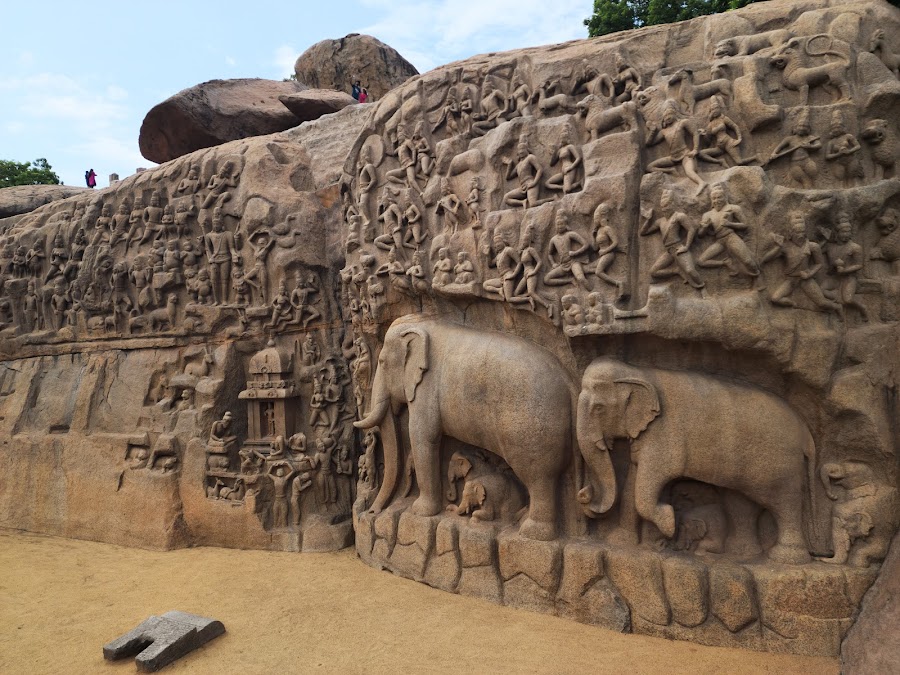
Arjuna's Penance
Mahabalipuram, India
- Explore the intricate rock carvings.
- Learn about Pallava dynasty history.
- Observe the natural cleft representing the Ganges.
- Take photos of the massive relief.
- Visit nearby Shore Temple and Pancha Rathas.
Known for:
Description:
Arjuna's Penance, also known as Descent of the Ganges, is a colossal open-air bas-relief monolith in Mahabalipuram. Carved out of two massive boulders, it's one of the largest rock reliefs in the world. The intricate carvings depict scenes from the Mahabharata, including Arjuna's penance to obtain Shiva's weapon, the Pashupatastra. Some scholars believe it represents the descent of the Ganges River to Earth. The sheer scale and detail of the carvings are breathtaking, showcasing the Pallava dynasty's artistic prowess. Keep an eye out for the natural cleft in the rock, ingeniously used to represent the river's descent. It's a must-see for history buffs and art lovers alike.
History:
The Arjuna's Penance relief is believed to have been created during the Pallava dynasty, likely during the reign of King Narasimhavarman I (Mamalla) in the 7th century CE. The Pallavas were renowned for their rock-cut architecture and their patronage of art and sculpture. While the exact interpretation of the relief is debated, it's widely accepted that it depicts scenes from Hindu mythology. Some historians propose that the panel commemorates the Pallava's victory over the Chalukyas. Over centuries, the site faced natural weathering and exposure, but it has been preserved and maintained by the Archaeological Survey of India (ASI), allowing visitors to appreciate its historical significance.